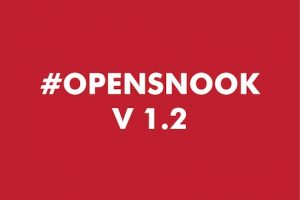
It’s week three/four/five of our Open Snook project and given I’m posting this in our fifth week we’re behind our schedule.
Last week, during our Monday morning meeting (nicknamed the MMM) we had a discussion on our Moscow framework for the site. We’re using Moscow to develop the online site iteratively (and other elements of Snook) by discussing, and voting internally if needed on what is most important to build/develop next. You can view our planned schedule here.
Previously, using our own design tools in an internal hack event with the team we developed personas of our audience. Don’t worry – we didn’t over stereotype anyone, but we created descriptions and characters of different types of clients, students, citizens, chief executives.

This was important exercise for a few reasons.
1. As a fairly new team it was important for me to share knowledge of our clients and audience past and present in terms of what they are looking for from Snook and our services. We try our best to help our customers achieve what they need to so it is important we understand their motivations.
2. We articulated key needs of each person at a wider scale than just the website. This was questioning why our audiences interface with Snook. We also included audiences we currently don’t attract and would like to work with. This open exercise at the beginning of any project blends into many levels of company and brand development. Whilst undertaking needs exercises we’re also discussing brand, tone of voice, how to display case studies, what it is that we do.
Here’s an example of some of the needs:
As a Middle manager, I need clarification that what we are designing is the right idea so that I can validate what our organisation is doing is right.
We do this by hiring Snook to undertake testing of our product.
This is the same method we’ve used with organisations like the Department for Health and Department for Work and Pensions when designing digital tools for mental wellbeing and employment. GDS champion the approach and you can read more about it here.
3. The above exercise then allowed us to synthesise user needs into what functions and specific content we need to create online (and offline). We then begin prioritising this.
Some of our core needs included:
1. Understanding what Service Design is
2. Seeing a strong client track record
3. Understanding how we work
With each need and series of concepts we are going to test the idea being developed.
Obviously there are the most important needs which include being able to contact and find us which was our version 1.0.
What we hadn’t considered here was the below need, which as a live company is very important.
As a potential collaborator on a bid, I need to validate Snook’s credentials and learn more about their past work so that I can utilise this content into writing a shared bid.
We do this by checking out their case studies and client list.
So – this whole process is about sharing how we design for our clients, and testing it on ourselves. One of the most important elements of design is to listen to feedback from your customers.
One of our team brought feedback to the table that some of our potential collaborators were trying to find out more about the company and our clients and without much information online they questioned who we were and couldn’t validate us.
For this reason we’ve brought in several quick features that show ongoing work.
Client logos of our past experience, a link to our blog which is an ongoing stream of information and embedded our twitter where we communicate on a daily basis about our work.
Next week we’re focusing on shipping our client testimonials and bringing together our first Case Studies from the old website.
See you at version 1.3.
